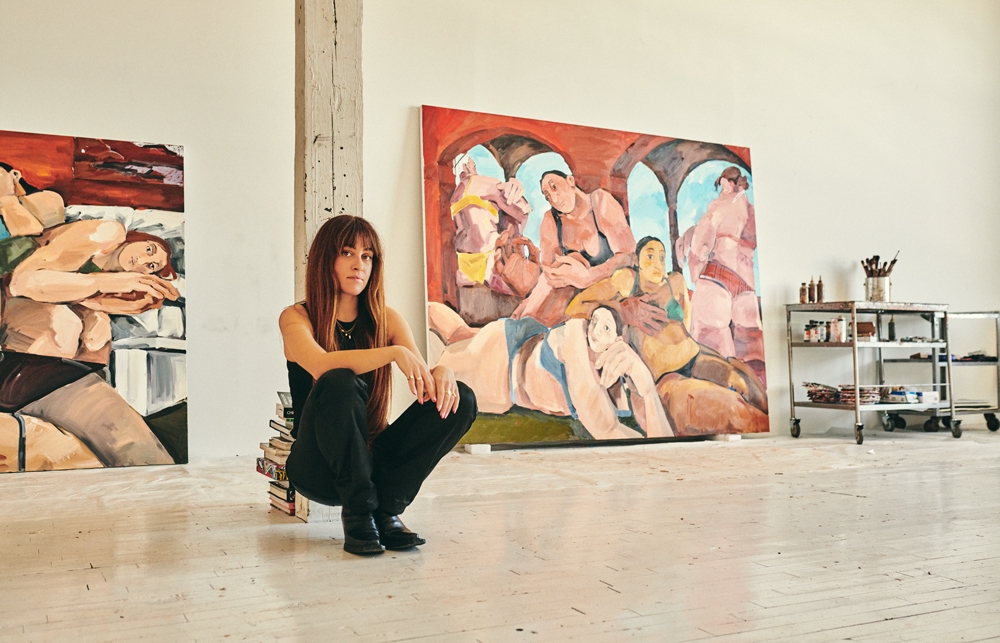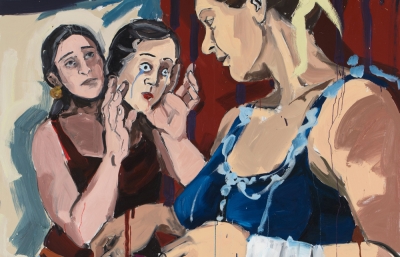What is your routine? I know you spend a lot of time in the studio, but do you have a daily schedule that you adhere to?
I don’t have a routine. But I like the idea of having one, only to feel free by breaking it. Things that are consistent are coffee breaks and making some time for the studio. I try to go to the studio every day, even if it’s just for a bit. When I take a day off, it’s usually during the week because I like working on the weekends, especially on Sundays. Nobody is around and I like that quietness. In summer, I like working until midday. Then I hop on the L train to the beach, eat a few tacos, and come back. I like to sketch at home in the mornings, but in the studio, I mostly just paint.
I remember you mentioned wanting to be an artist starting at age five. Or maybe that is when you remember starting to make art? There is such romanticism attached to being an artist, what that life will be like. You seem like someone who is just always working and making, and making some more. As you gain attention, anticipate a big solo show coming up… are you able to articulate what your younger self would say to you now as a working artist? I say this because you and I talked about that leap, how being catapulted into the art world is so hard to explain.
I would tell my younger self: Enjoy the process, you will be fine. But I would do exactly the same to get out there, which has always been by working a lot. I have always been proud of my self-discipline when it comes to work. I get that from my parents and brother, such hardworking people. When you’re five, you, of course, think naively about something you might like to be, but my passion today is the same as when I was a child. I think a painter must be completely obsessed with painting; otherwise how could you justify all of the time spent doing it?
You knew this was coming: And I don’t want to hear just about painters, but who are your favorite artists? You make these very cinematic scenes, so I hear music, see things moving… talk about film, music, painters. What is in the Cristina BanBan sphere?
Magdalena Suarez Frimkess, Carmen Amaya (flamenco singer/dancer), EllenAllien (DJ), Sandy Kim, Delia Derbyshire (pioneer of British electronic music), Maruja Mallo (surrealist painter from the “Generation of 1927”) and Antonio Machado (poet) inspire me directly or indirectly for different reasons. I also like the work of Robert Colescott, Paula Rego, Francis Bacon, Frank Auerbach, Joaquin Sorolla, and Tal R. I like watching Clara Rockmore play — without touching—the theremin, and listening to David Lynch’s Weather Report, “Fatty Folders” by Roman Flügel, “Blowout Comb” by Digable Planets and “La Leyenda del Tiempo” from Camaron de la Isla.











